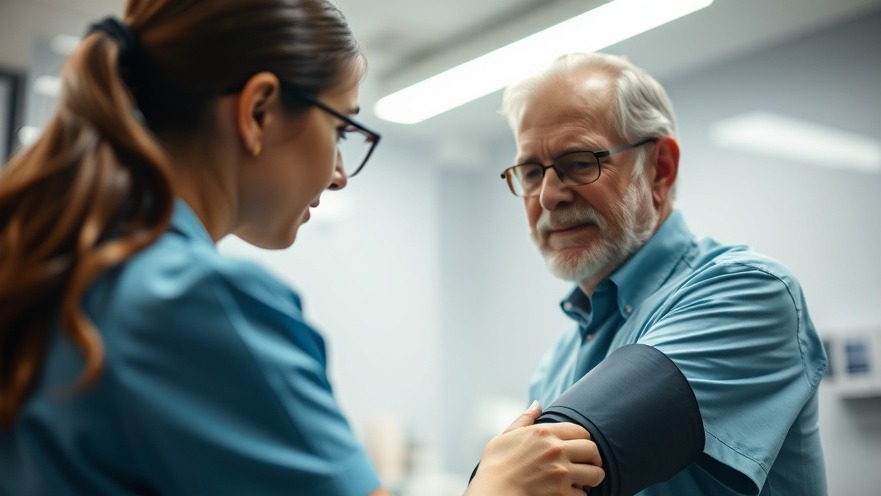
Understanding Intracerebral Hemorrhage: A Silent Threat
Intracerebral hemorrhage (ICH) is a critical medical condition involving bleeding within the brain, often leading to severe neurological consequences. For suburban professionals often engulfed in daily obligations, the thought of such a profound health crisis can seem distant, yet its prevalence calls for increased awareness. Recent research indicates that initiating aggressive blood pressure (BP) management soon after the onset of ICH symptoms significantly improves recovery outcomes, shining a light on an essential aspect of emergency care.
Early Intervention: The Key to Better Outcomes
The findings from the recent analysis published in The Lancet Neurology underscore the importance of timely intervention. Participants treated within three hours of symptom onset, using intensive BP-lowering strategies, demonstrated a marked improvement in functional recovery. This approach not only led to a reduction in the severity of hematoma but also improved patient survival rates. Understanding these timelines can empower professionals to recognize symptoms quickly and seek immediate help.
Reevaluating Treatment Guidelines
With older guidelines recommending a more conservative BP target of less than 180 mm Hg, the new evidence challenges this norm, advocating for a more aggressive target of less than 140 mm Hg within the first hour. This shift in treatment philosophy could impact how healthcare providers approach ICH management, prioritizing rapid response over cautious treatment methods. For professionals aged 25-50, familiarizing themselves with these evolving guidelines could save lives, including their own or loved ones in emergency situations.
Success Stories: Real-Life Impacts of Timely Treatment
Consider the story of Sarah, a 38-year-old marketing executive who experienced a mild headache that quickly escalated into severe symptoms. Thanks to her family’s quick actions and their knowledge of ICH symptoms, her treatment began within two hours of onset. The medical team implemented early aggressive BP-lowering measures, and as a result, Sarah made a full recovery, returning to her life filled with work and family due to the prompt care she received. Stories like Sarah's serve as powerful reminders of how crucial timely medical intervention can be, as guided by recent research findings.
Future Predictions: What This Means for Healthcare
As the medical field continues to embrace evidence-driven practices, the implications of these findings could pave the way for updated protocols across hospitals. Professionals in the healthcare field must prepare for changes in how they manage cases of ICH, ensuring that they are equipped with current knowledge on aggressive treatment methods. Education will be vital in minimizing risks and enhancing patient outcomes, reinforcing the need for healthcare workers to stay engaged with ongoing research and adaptations in clinical practice.
Actionable Insights for Suburban Professionals
It’s important for professionals to stay informed not just about their health but the health of those around them. Regular screening for blood pressure can also help in identifying risk factors for stroke, including ICH, and implementing lifestyle changes, such as a balanced diet and regular exercise, can be key preventive measures. Prepare for health emergencies by knowing the signs of ICH, familiarizing yourself with treatment guidelines, and encouraging others to seek help immediately when faced with sudden symptoms.
In conclusion, being proactive about awareness on health parameters, treatment protocols, and emergency response strategies can drastically shape health outcomes in your community. As suburban professionals, using insights from recent medical research can empower you to take charge of your health and that of others. Recognizing the importance of timely medical interventions like aggressive blood pressure control in cases of ICH can foster a culture of awareness and prompt action.
Stay vigilant, remain informed, and help spread the knowledge about aggressive blood pressure management in ICH.
 Add Row
Add Row  Add
Add 




Write A Comment